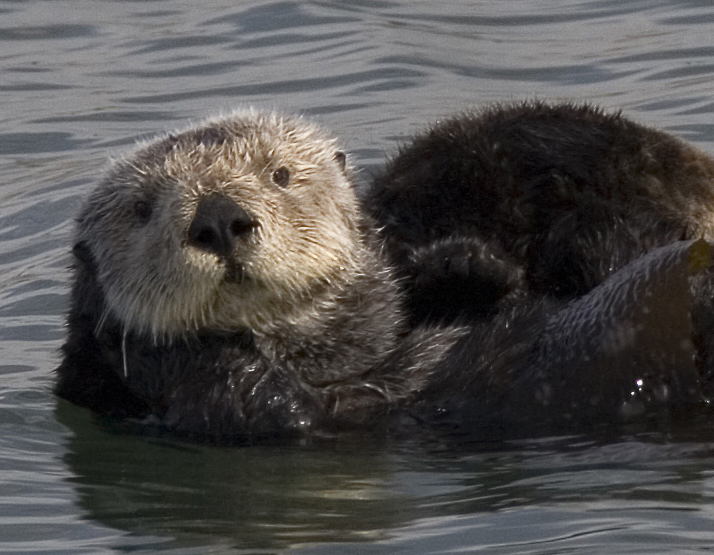
I’m sitting at the beach, where I’ve been the past week, and I’m thinking about time.
Cape Foulweather is out there, a spit in the ocean to the north, so shrouded in fog that I can’t see it at all. A little to the south, also invisible, lies Gull Rock. Hard by it is Otter Rock, a bony outcropping that hasn’t seen an actual otter in more than a century.
Up the road either way is a flimsy yet stubborn string of weathered motels, chowder joints, candy shops, taverns, groceries, kite shops and other human clingings to the edge of the continent. I’m partial to Mo’s, where you can get a decent beer and a decent chowder and a decent smile.
People scratch for a living here, and sometimes the scratches run deep. But on a beautiful day, when you’re pointing in the right direction and you aren’t looking at the scars, it can be one of the happiest places on earth.
And of course, the scars are there because we all want to come to this place and snatch a little happiness, and we all want to be comfortable while we’re at it. Yes, I burned precious liquefied dinosaur to get here.
I hear birds I can’t see. I breathe watery air. I sip black coffee. I feel almost at home.
When I’m down this way I like to visit Oregon State University’s Hatfield Marine Science Center, which has a pleasant walking path along the estuary of Yaquina Bay and where a lot of valuable research is done. In the visitors center, if you time things right, you can see the resident octopus chomping on crab at mealtime (kids love this show). In the little shop I found a fascinating-looking book of ship lore, from chanteys to wrecks to mutinies, that I didn’t buy because I already have a big stack of books waiting to be read. And the displays are always well-explained for general and young audiences: science made not easy, but accessible and interesting.
The Hatfield Center makes you think about geology, about the skeleton on which life attaches. To geology, the little things we think of as time are barely a blink. Yet in those blinks we can make a gawdamighty mess of things, often while we’re in the process of improving them. As one display panel says:
Most of nature does not run at the time that we measure in seconds or minutes or days. To understand these patterns we must understand time itself.
Impossible, of course. But we can take a stab at it. Under the circumstances, I’d say, we have to take a stab at it.

I was struck by the science center’s explanation of the disappearing otter and why Otter Rock and the entire Oregon Coast don’t have any. Here’s the story, directly from the display:
The Sea Otter: Oregon’s Missing Link
Trophic Cascade
A trophic cascade occurs when a top predator (sea otter) reduces the abundance of its prey (sea urchin) which as a result allows for an increase in abundance of the next level (kelp). Sea otters are keystone predators; when they feed on sea urchins the population decreases and in turn kelp beds increase due to the lack of predation from sea urchins. For Oregon the sea otter is the missing link. With sea otters missing, urchin populations explode and kelp beds are diminished. The lack of sea otters today in Oregon contributes to the lack of local kelp beds.
Kelp Beds
“Kelp beds are important to coastal waters. Just like forests on land kelp beds provide habitat, food, shelter and oxygen. Alongside sea otters, various fish and invertebrate species use kelp beds as nurseries, hiding places and a place to rest. Seabirds even use the canopy of kelp beds as a floating refuge. Kelp beds are also beneficial to the coast line because they soften the force of waves that cause beach erosion.
Local HistoryWhen sea otters were first hunted for their dense and luxurious fur, the estimated population size was between 100,000 and 300,000 individuals. By the time they were given protection in 1911 the population had decreased by 98%. The sea otter link was broken when Oregon’s last sea otter was killed in 1906.
An attempt was made in the 1970s to reintroduce the Alaskan subspecies to Oregon’s coast. However that attempt failed as all the sea otters either died or returned to their native waters. Through DNA analysis of old native sea otter pelts, scientists now know that the California subspecies is native to Oregon.
One of those old pelts is on display. It feels indescribably good. Rustle your fingers through it and you know exactly why people wanted that fur. You can understand the desire, if not the carnage. On Wall Street they call this sort of thing short-term profit.
I grew up in the Pacific Northwest. I’ve known, and been friends with, loggers and commercial fishermen: I admire their strength, their endurance, their bravery in the face of danger. Besides, I use what they produce. I eat fish. I live in a house made of wood. These things can be responsibly sustained.
In the Northwest we pride ourselves on self-sufficiency and the taming of the land. But in the blink of a geologic eye we’ve tamed it almost to death. A system that took eons to develop is laboring to overcome our improvements. When — if — we think about the future, we fail to consider that it’s built on the deep past. Our sea otters are gone.
So, yes, the spotted owl matters. Not just for itself, but for the whole trophic cascade.
Maybe it’s time we started thinking about time.